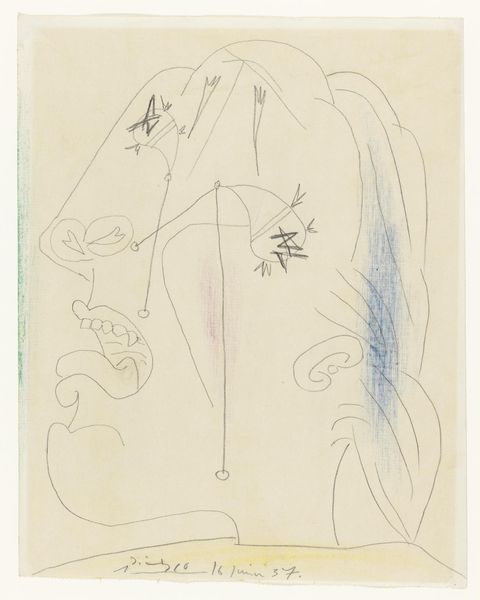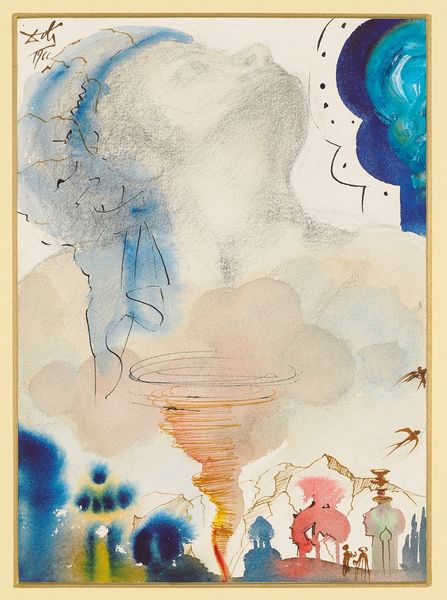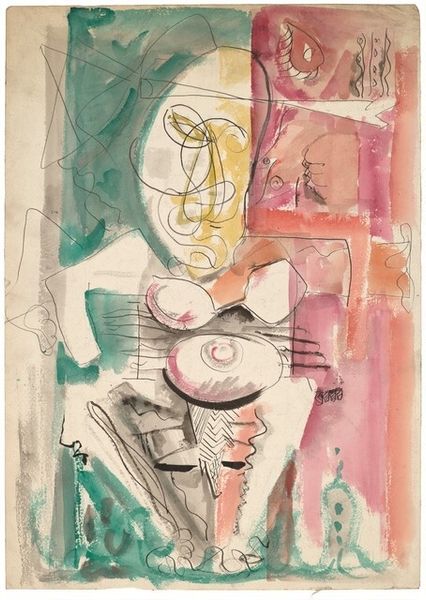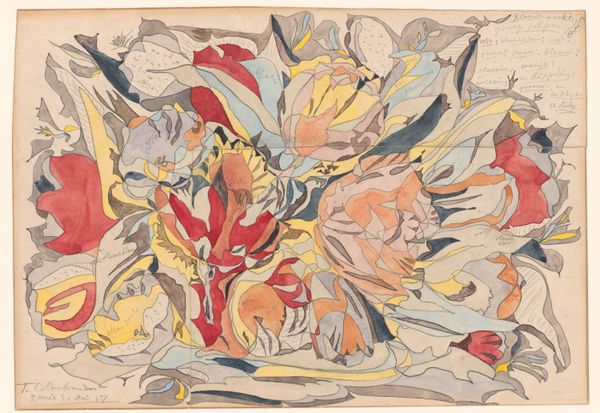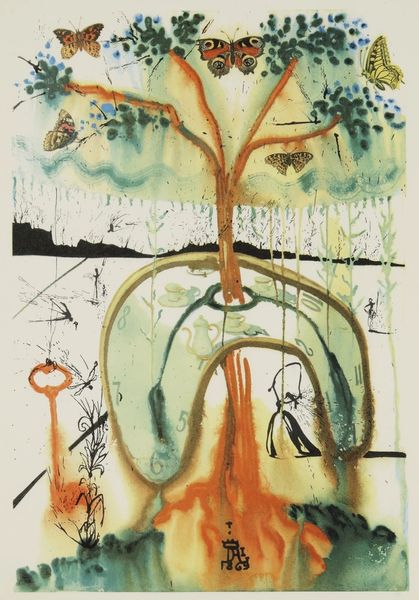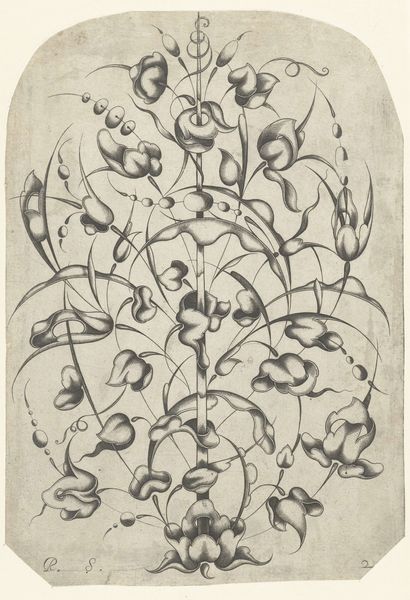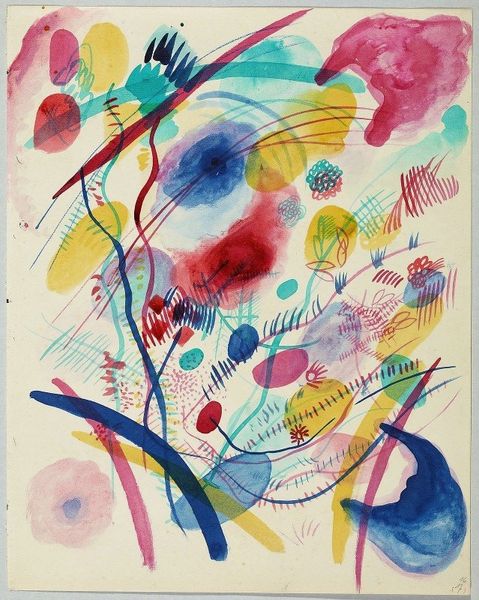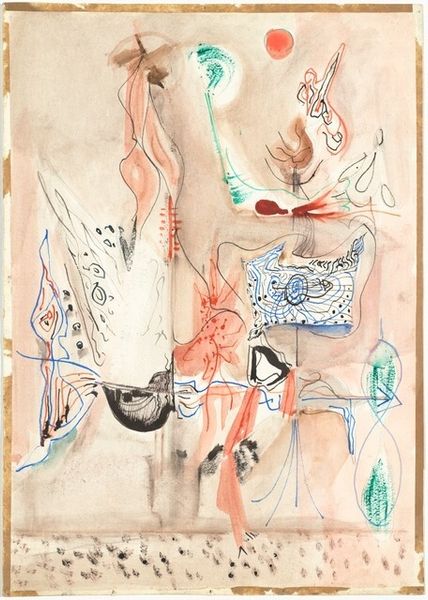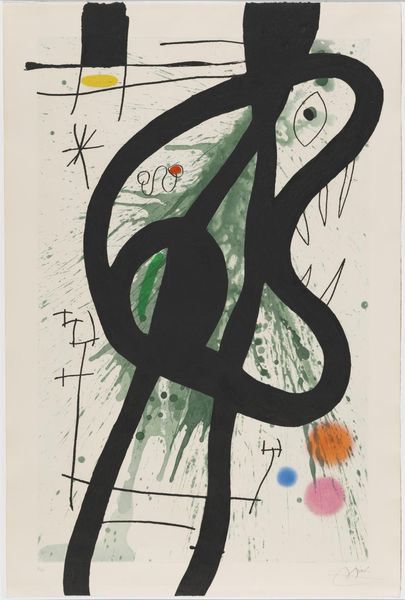![Abstraction [recto] by Mark Rothko](/_next/image?url=https%3A%2F%2Fd2w8kbdekdi1gv.cloudfront.net%2FeyJidWNrZXQiOiAiYXJ0ZXJhLWltYWdlcy1idWNrZXQiLCAia2V5IjogImFydHdvcmtzLzI3ZDY4YThiLTJhZWItNGRiMC04MzhkLWU3ZjFiNjE1YzVhZC8yN2Q2OGE4Yi0yYWViLTRkYjAtODM4ZC1lN2YxYjYxNWM1YWRfZnVsbC5qcGciLCAiZWRpdHMiOiB7InJlc2l6ZSI6IHsid2lkdGgiOiAxOTIwLCAiaGVpZ2h0IjogMTkyMCwgImZpdCI6ICJpbnNpZGUifX19&w=1080&q=75)
drawing, paper, watercolor
#
abstract-expressionism
#
drawing
#
water colours
#
paper
#
form
#
watercolor
#
abstraction
#
line
#
modernism
#
watercolor
Dimensions: overall: 52.1 x 36.7 cm (20 1/2 x 14 7/16 in.)
Copyright: National Gallery of Art: CC0 1.0
Editor: Here we have Rothko's "Abstraction," likely created between 1944 and 1945, rendered in watercolor and possibly other drawing media on paper. It strikes me as both delicate and chaotic, a fascinating juxtaposition. What's your interpretation of it? Curator: Considering Rothko's engagement with automatism at this time, it is useful to think about the labor that created these layered watercolors, and also, the social and economic pressures influencing what was made, what could be made, during and after WWII. Looking at how the color fields interact—the soft pink and that watery teal—I wonder, were these commercially produced pigments, or were they created from salvaged materials? Editor: Salvaged? You mean, because of wartime shortages? Curator: Precisely. And look closely at the paper itself. Is that a high-quality watercolor paper, or something more readily available? Its texture and sourcing can reveal more about Rothko’s material limitations. Also, note the lines drawn across the paper – the rapid and unconscious gestures – and compare those to his paintings made at that time. How might the economics of the paper market affect the artistic outcome? Editor: So you're seeing this abstract drawing not just as an expression of Rothko’s inner state, but as a record of material conditions? Curator: Exactly. Think about the value placed on certain materials during wartime, or even the tools available to artists. The quality of paper and paint, access to studios, or the pressures to produce "optimistic" imagery might impact abstraction like this. It may change our perspective if we look at that watery teal or that soft pink and consider supply-side and distribution aspects of commercial paints, including who made the paints, or the effects of government policies on production? Editor: I hadn't considered that. Viewing the art through the lens of its materiality and production definitely changes the way I perceive Rothko's "Abstraction." Thank you for showing me what I missed. Curator: Of course. Always think about the hands involved, not just Rothko’s. It is very possible his art supply choices reveal more than just colour preferences.
Comments
No comments
Be the first to comment and join the conversation on the ultimate creative platform.
